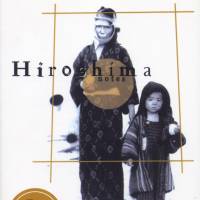In 1963, 28-year-old novelist and rising star Kenzaburo Oe was sent to Hiroshima to report on the rancorous split between political groups calling for the abolition of nuclear weapons.
Hiroshima Notes, by Kenzaburo Oe.
192 pages
GROVE ATLANTIC, Nonfiction.
It would be the first of multiple visits to Hiroshima and an ongoing contemplation of the deep trauma the people of Hiroshima had endured in the 18 years since the nuclear Holocaust. Reflecting upon their misery and mistreatment gave Oe the strength to search for the light in his own personal moment of darkness when his first child was born with a severe head abnormality.
Both the American Occupation authorities and the local government had been concerned to paint an absurdly optimistic and censored picture of post-disaster Hiroshima. By the autumn of 1945, it was declared that all those expected to die from radiation had already died.
For 10 years there was scarcely any public discussion of the bomb — the local newspaper did not even have movable type for the words "atomic bomb" or "radioactivity." Yet a profusion of victims continued to die from radioactivity and leukemia, and over 1,000 young women hid their scarred faces in shame in Hiroshima back rooms.
The stories Oe records, such as the 4-year-old boy exposed to the bomb in 1945 who died of leukemia 20 years later, and whose fiancee committed suicide two weeks after his death, speak powerfully of a community suffering enduring physical and psychological abuse. This book is Oe's plangent call for the true aftermath of Hiroshima to be eternally remembered.
Read archived reviews of Japanese classics at jtimes.jp/essential.



